|
|
 |
|
 |
| |
| Shekhawati is simply beautiful. Every street, house and wall has the stamp of an artist's imagination in paint. |
| |
Shekhawati is Rajasthan's very own Open Air Art Gallery. Shekhawati is a blanket name to describe the three districts of Churu, Jhunjhunu and Sikar, the mural rich areas. The name derives from Rao Shekha, a member of the Kachhawaha family of Rajputs who ruled Jaipur for centuries. In the 15th century, Shekha conquered a considerable territory in this northeastern part of Rajasthan. This, retained and extended by his heirs, the Shekhawats, came to be known as Shekhawati, literally the 'Garden of Shekha'. Shekhawati has the greatest concentration of painted forts, chhatris (cenotaphs), temples and havelis (mansions) in the country. In fact, this is also the largest collection of murals in the whole world. Some of the flourishing towns were Sikar, Ramgarh, Fatehpur, Lachhmangarh, Churu, Mandawa, Jhunjhunu, Nawalgarh and others. |
| |
| |
| How to Reach |
 |
 |
 |
By Air:
Nearest airport is Jaipur. |
By Train:
The entire area of Shekhawati is easily accessible from Jaipur or Bikaner. Sikar, Nawalgarh and Jhunjhnu are connected to Jaipur and Delhi by passenger trains. |
By Road:
Delhi is 6 hrs. Drive via samode. |
|
| |
| Places of Interest around Shekhawati |
| |
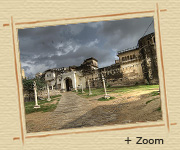 Mandawa Mandawa
Mandawa is a small town in the heart of Shekhawati region. The place is known not only for its havelis but also for its Fort Palace. The structure of the palace reminds of the cultural and social importance of this region in the past. Of the havelis, the most important are the Chokhani, Ladia, Binsidhar Newatia, and Gulab Rai Ladia Haveli. Another haveli, the Binsidhar Newatia Haveli, is known for its curious paintings. There is a painting of a boy holding a telephone and a European woman in a car driven by a chauffeur. The Gulab Rai Ladia Haveli is famous for its erotic images, now mostly defaced.
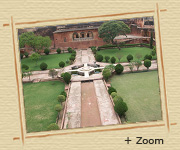 Nawalgarh Nawalgarh
Nawalgarh is famous for its fort that was built in AD 1737 by Thakur Nawal Singh. The Bala Qila has a kiosk with beautiful ceiling paintings while the Roop Nivas Palace has now been converted into a hotel. Like Mandawa, Nawalgarh too has a number of important havelis including Anandi Lal Poddar Haveli, Aath Haveli, Hem Raj Kulwal Haveli, Bhagton Ki Haveli, and Khedwal Bhavan.
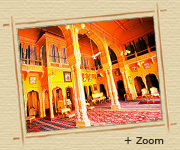 Dundlod Dundlod
Situated around 30 south-east of Mandawa, Dundlod has many havelis such as Jathia Haveli, and Tuganram Goenka Haveli. However, Dundlod is better known for its fort and palace. Another famous attraction here is the Satyanarayan Temple.
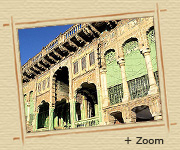 Fatehpur Fatehpur
Established in 1451 as the capital of the Muslim Nawabs, Fatehpur was taken over by the Rajputs of the Shekhawati region in the 18th century. The main attractions here are the Mahavir Prasad Goenka Haveli, the Gauri Shankar Haveli, the Nand Lal Devra Haveli, the Harikrishnan Das Sarogi Haveli, and a 17th-century baoli or step-well.
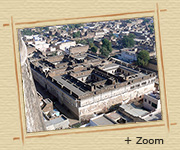 Lakshmangarh Lakshmangarh
Lakshmangarh was founded in the early 19th century on the model of Jaipur. There are fine havelis including the grand Ganeriwala with its four courtyards
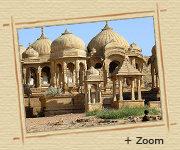 Ramgarh Ramgarh
Ramgarh was settled by the Poddars in the late 18th century. Apart from the havelis, there are beautiful chhatris (cenotaphs) with painted entrances and the temples of Shani and Ganga.
|
| |
|
|




